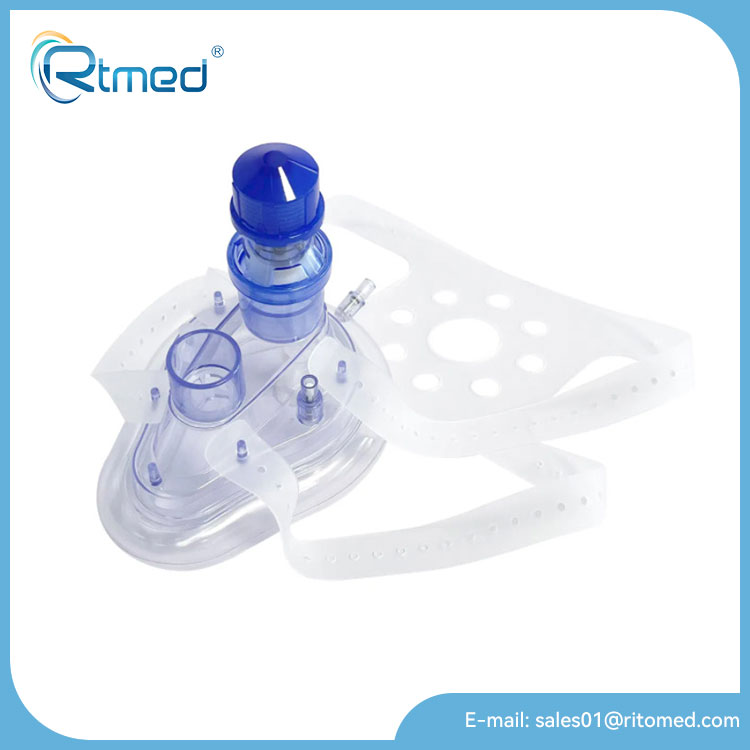Which disposable mask really fits my day-to-day clinical needs?
2025-11-12
When I plan procurement for busy departments, I look for products that don’t just tick boxes but actually make shifts smoother. Brands that keep showing up on my shortlist include RTMED, especially when a dependable Disposable Mask is the brief.
What situations actually call for which mask type?
Different patients and environments push different requirements. Oxygenation during chest pain in the ER is not the same as aerosol therapy in a community clinic, or fixed FiO₂ control in the ICU. Here’s how I match the task to the tool while keeping stock simple and predictable.
| Mask type | Primary purpose | Typical scenario | Interface and notes | Adult / pediatric | Material options | Single-use | Standout details |
|---|---|---|---|---|---|---|---|
| Oxygen mask | General oxygen delivery | Dyspnea, post-op recovery, step-down care | Simple mask, standard tubing connector | Multiple sizes available | Medical-grade PVC or silicone | Yes | Reliable go-to when nasal cannula isn’t enough |
| Nebulizer mask | Aerosolized medication | Asthma/COPD therapy in ED or clinic | Mask + nebulizer cup set | Adult and child sets | Medical-grade PVC or silicone | Yes | Stable aerosol output with straightforward setup |
| Venturi mask | Fixed oxygen concentration | When precise FiO₂ is requested by protocol | Color-coded jets for controlled FiO₂ | Adult and pediatric | Medical-grade PVC or silicone | Yes | Predictable titration that helps nursing workflows |
| Non-rebreathing mask | High-concentration oxygen | Acute hypoxemia, pre-oxygenation | Reservoir bag with one-way valves | Adult and pediatric | Medical-grade PVC or silicone | Yes | Fast setup when seconds matter |
| Tracheostomy mask | Trach oxygen/humidification | Post-trach care on ward or ICU | Fits over stoma, gentle strap design | Adult and pediatric | Soft PVC or silicone | Yes | Low-irritation edges for sensitive skin |
| Anesthesia mask | Induction and maintenance interface | OR use with circuit connection | Cushioned rim with clear dome | Size range from neonate to large adult | Medical-grade silicone or PVC | Yes | Transparent dome supports visual monitoring |
| CPAP mask | Non-invasive positive pressure | Acute NIV in monitored settings | NIV interface with secure headgear | Adult sizes; pediatric options as specified | Soft silicone cushions | Yes | Comfort seal helps reduce leaks during therapy |
| CPR mask | Barrier for rescue breaths | First response, crash cart, ambulance | One-way valve, compact storage | Universal fit | Medical-grade materials | Yes | Folds small, ready for emergency kits |
How do I keep selection simple without risking care quality?
- I standardize core SKUs, then add a narrow set of specialty masks for ICU and OR so nurses aren’t hunting through shelves.
- I keep adult and pediatric sizes side by side, color-coded on the shelf label for quick grabs on night shift.
- I choose clear domes and soft edges wherever possible so skin checks and patient reassurance are easier.
What materials and sizing actually help staff and patients?
I lean on medical-grade PVC when I want cost-efficient, dependable stock for high-volume areas. I choose silicone for gentler seals and longer dwell comfort during procedures. Both materials are available across sizes for adults and children, so I don’t need a different vendor just to cover pediatrics.
What should I know about sterility, shelf life, and single-use safety?
- Each mask is intended for single use to minimize cross-contamination risk.
- Packs are clearly labeled with manufacturing date and storage guidance, with a five-year shelf life when stored as directed.
- Peel-open pouches and lot traceability keep audits quick and clean.
Where do these masks actually live in the hospital?
I stock oxygen and non-rebreathing masks on crash carts and in the ER. Nebulizer sets sit in respiratory therapy kits and outpatient clinics. Venturi masks and trach masks stay in ICU drawers. Anesthesia and CPAP interfaces stay with OR and monitored beds. That way, the right mask is always within a few steps.
How do branding, packaging, and documentation work for different markets?
- For distributors building their own line, we support OEM packaging with your artwork and language requirements.
- When speed matters, I order house brand options under RTMED with ready designs to shorten the launch timeline.
- Every production batch ships with a test report, so tenders and hospital onboarding move forward without extra back-and-forth.
What configurations do buyers usually start with?
| Bundle | Includes | Who uses it | Why it works |
|---|---|---|---|
| ER starter set | Oxygen masks, non-rebreathing masks, CPR masks | Emergency rooms and ambulances | Covers rapid oxygenation and basic life support in one order |
| Respiratory therapy kit | Nebulizer masks + Venturi masks | RT departments and clinics | Switches between aerosol therapy and controlled FiO₂ without chasing parts |
| OR and ICU pack | Anesthesia masks, CPAP interfaces, tracheostomy masks | Operating rooms and intensive care units | Interfaces tailored for procedures and ventilatory support |
How do I avoid the most common purchasing mistakes?
- Buying only adult sizes and forgetting pediatrics, which forces last-minute substitutions.
- Skipping fixed-FiO₂ options and then over-relying on “one mask for all” in the ICU.
- Ordering without batch documentation, which slows down hospital registration later.
Why does a Disposable Mask line from one supplier streamline my supply chain?
When one partner covers oxygen, nebulizer, Venturi, non-rebreathing, tracheostomy, anesthesia, CPAP, and CPR masks, I reduce split shipments and mismatched connectors. With RTMED I can choose OEM packs or ready house-brand designs, keep both adult and child sizes on one PO, and rely on steady lead times for routine replenishment and emergencies.
What quality signals do I check before adding a new SKU?
- Clear labeling with size, intended use, and storage conditions.
- Consistent seal comfort and visibility through the dome or body.
- Lot traceability and a test report included in every batch.
How quickly can I receive stable supply without scrambling each month?
I plan monthly call-offs against a standing order. That gives predictable deliveries for high-turn masks while leaving room to flex up for seasonal surges. With a compact SKU list, training stays simple and stock checks stay fast.
Would a short checklist help with my next order?
- Confirm single-use policy and five-year shelf life for storage planning.
- Match mask types to your case mix and department layout.
- Decide on OEM packaging versus RTMED house brand to hit your launch date.
- Verify adult and pediatric coverage across all interfaces.
- Request batch test reports on the PI so onboarding is effortless.
Ready to talk specifications and samples?
If you want a straightforward path to stock masks that actually fit your workflow, I’m happy to help specify sizes, materials, and bundles. Tell me where these masks will live and who will use them, and I’ll line up a clean, auditable configuration with documents ready. For quotes, samples, or private-label artwork, contact us and we’ll get your project moving today.



